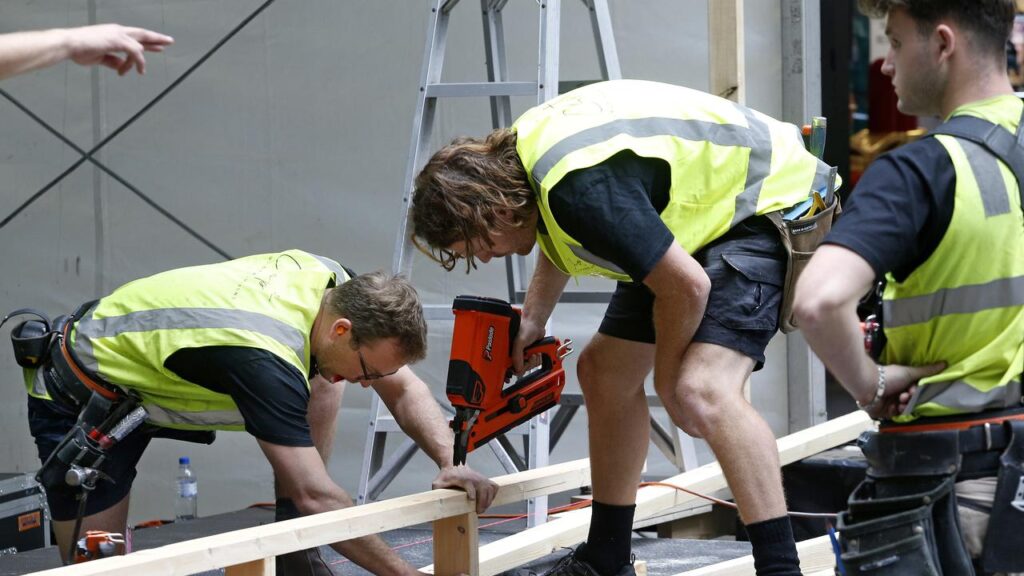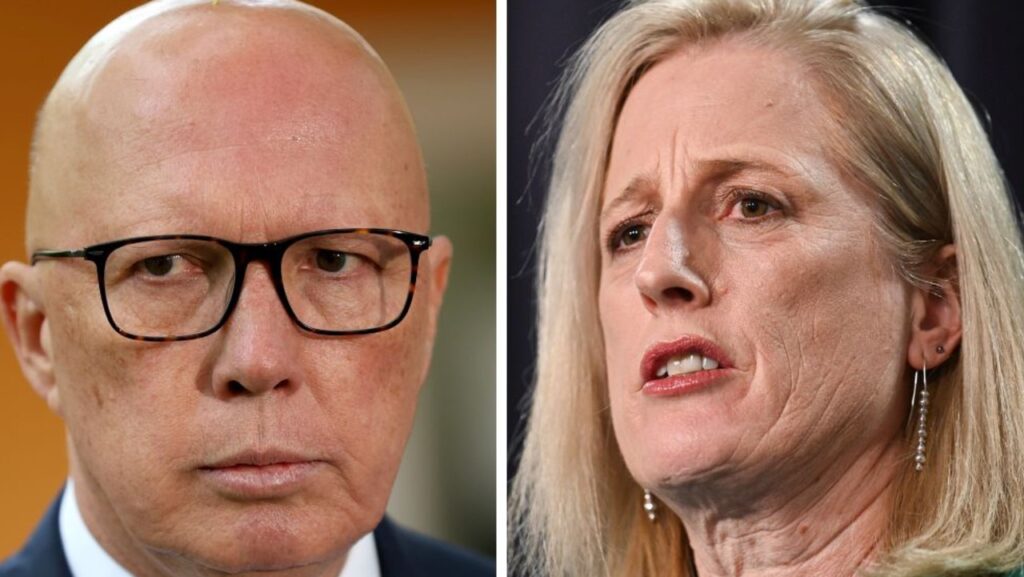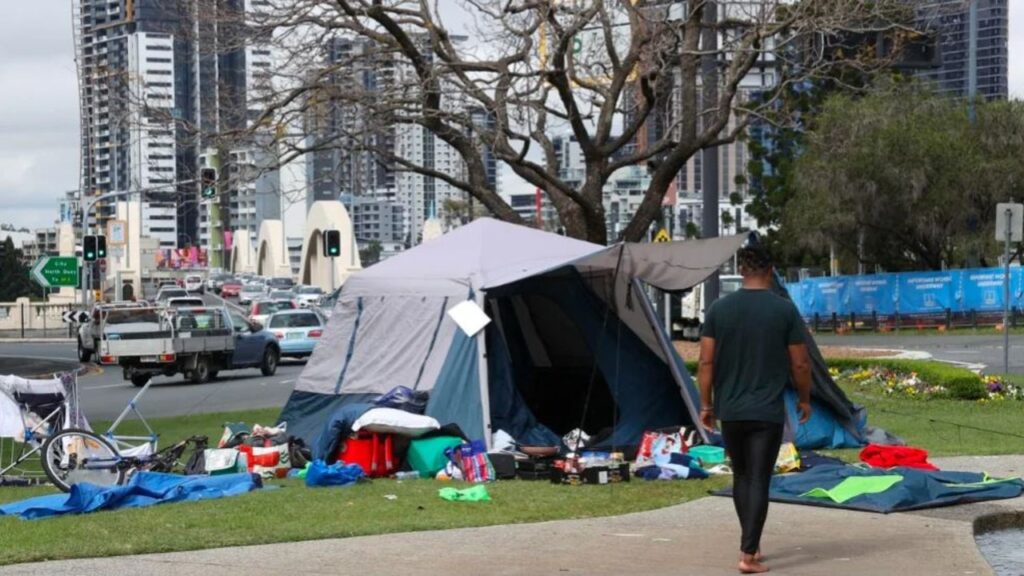All the changes coming on July 1, 2024
Written by admin on June 13, 2024
The start of the new financial year is just around the corner, and as always there are a raft of big changes kicking in.
“The end of the financial year always brings with it the opportunity to get your finances in order,” said Sarah Megginson, personal finance expert at comparison website Finder. “But this year, there’s an added incentive to get all your ducks in a row, as you’ll have more money to work with via tax cuts and energy credits.”
From tax cuts and superannuation to welfare payments, here are all the changes coming on July 1, 2024.
Stage three tax cuts
All Australian workers will get a tax cut ranging from $350 up to $4500 depending on their income bracket when the Labor’s stage three tax cuts take effect on July 1.
The rejigged tax cuts, first announced by the Albanese government in January and detailed in last month’s federal budget, provide additional relief to low- and middle-income earners while slashing the benefits for approximately one million taxpayers that earn more than $150,000, as originally planned under the Morrison-era changes.
Under the changes, the lowest tax rate for people earning between $18,201 and $45,000 will fall from 19 per cent to 16 per cent, while the 32.5 per cent tax rate will fall to 30 per cent for those earning above $45,000, but will now cut off at $135,000.
People earning between $135,000 and $190,000 will pay 37 per cent tax. The 37 per cent bracket currently starts at $120,000.
Meanwhile the top tax bracket of 45 per cent will now kick in at $190,000 instead of $180,000.
The original stage three tax cuts had proposed to eliminate the 37 per cent tax bracket entirely while raising the top threshold to $200,000, which would have meant people earning between $45,000 and $200,000 paid the same 30 per cent flat rate.
“It’s important to remember high-income earners will still get a large tax cut, but it will be slightly less than under the Morrison plan,” wrote Ebony Bennett, deputy director of the Australia Institute.
“Someone earning $200,000 per year will no longer get an eye-watering $9075 per year but will still receive $4529 a year. Nothing to whinge about.”
Labor says its changes mean all 13.6 million taxpayers will receive a cut, and 2.9 million more people will receive a cut compared to the original plan.
Additionally, 84 per cent of taxpayers will now receive a bigger tax cut than previously planned.
The average taxpayer will save $1888 a year, according to Westpac.
“The upshot is that people with taxable incomes of less than about $146,486 … will get either the same or a larger tax cut under the new plan,” according to the Grattan Institute.
Economists say Labor’s tax plan will cost more the government more than $20 billion a year in lost revenue — around 1 per cent of GDP.
This would be larger still if a future Coalition government kept the stage three benefits for high-income earners but also kept the bigger tax cuts for low- and middle-income earners.
The tweaked tax package will come at a cost of $8.4 billion in the four years to mid-2026, according to Parliamentary Budget Office analysis.
Impact Economics and Policy lead economist Angela Jackson said last month the changes risked fuelling inflation by pumping more spending into the economy, making the Reserve Bank’s job harder.
“I don’t think you’d find any economist who would be saying, ‘You know what we need right now is $20 billion of tax cuts,’” Dr Jackson told the National Press Club.
“They are a real problem for the government … those stage three tax cuts are undoubtedly going to add to aggregate demand and cause more issues and more headaches than even the Reserve Bank was hoping for.”
But a NAB survey found the majority of Australians intend to squirrel away their tax cut or use it to beat back cost-of-living pressures, rather than splurge on one-off items.
Anthony Albanese hailed the passage of the tax package through parliament in February — with the grudging support of the Coalition — as a “huge win” for Australian workers.
“Australians are earning more and they will get to keep more of what they earn,” the Prime Minister said.
The Coalition has vowed to develop a tax reform package ahead of the next federal election, due by May 2025 at the latest, which would be “in keeping with the stage three tax cuts”.
Passport fees to skyrocket
Australians will soon pay the highest fees in the world for a new passport.
The cost of a 10-year adult passport will rise by another 15 per cent on July 1 from the current price of $346 to $398.
Analysis from Compare the Market shows the new price would make Australian passports the most expensive in the world ahead of Mexico, the US, New Zealand and Italy.
“I think this is a reasonable step,” Foreign Minister Penny Wong told parliament. “I understand no one likes to pay more for things.”
May’s budget also revealed Aussie travellers will have the option from July 2 of fast-tracking their passport processing to within five business days, for an additional $100 fee.
As it currently stands, obtaining a new passport or renewing one usually takes around six weeks, according to the Australian Passport Office.
There is already a priority processing option for Aussies needing their travel documents urgently, which allows them to get their hands on their passport in just two business days.
But this costs $252, on top of the base passport fee.
Minimum wage increase
More than 2.6 million workers will receive at least an additional $33.10 per week from July 1 after the workplace umpire increased the minimum wage.
The Fair Work Commission (FWC) ruling, handed down in June, increases award and minimum wages by 3.75 per cent, with the national minimum wage set to increase by 87 cents to $24.10 per hour, or $915.91 a week.
President Justice Adam Hatcher said the FWC bench had chosen not to deliver an increase that significantly outstripped inflation — measured at 3.6 per cent in the year to March — when productivity was weak and additional cost-of-living relief was in the pipeline.
“It is not appropriate at this time to increase award wages by any amount significantly above the inflation rate,” Justice Hatcher said.
“This is principally because labour productivity is no higher than it was four years ago and productivity growth has only recently returned to positive territory.”
“We have also taken into account that modern award-reliant employees will shortly receive the benefit of the stage 3 tax cuts and the budget cost-of-living measures, which are projected to increase real household disposable incomes over the next 12 months.”
The share of Australian workers directly and indirectly affected by the decision equates to roughly one in four workers.
Across the economy, 20.7 per cent of workers have their pay set under 121 modern award rates, while just 0.2 per cent or 32,100 of Australian employees are paid the minimum wage.
A further 4 per cent of workers on enterprise and individual agreements have their pay tied to the FWC’s annual determination.
The FWC also announced it would examine pay in female-dominated industries before next year’s decision.
Australian Council of Trade Unions (ACTU) secretary Sally McManus hailed the decision as a “win for workers”.
“This means that an entry-level retail or hospo worker will be $2600 per year better off,” she said. “A mid-level community sector worker will be $3260 a year better off, and a forklift driver will be $3170 better off.”
The Australian Retailers Association (ARA) said the decision, in addition to the scheduled 0.5 per cent increase to the superannuation guarantee rate, meant the increase in wages for businesses would be 4.25 per cent from July 1.
However, ARA chief executive Paul Zahra said the decision would increase pressure on struggling retailers, particularly small businesses.
“With discretionary spending slowing and operating costs rising across the board, wage increases without productivity improvements place businesses, particularly small businesses under significant pressure and can ultimately lead to price increases,” he said.
“Wage growth is important … however, we have consistently advocated that any increase must reflect the context of inflation moderating, the decline of labour productivity and the cost-of-doing business challenges.“
But ANZ said the 3.75 per cent rise was “in the middle of our expected range of 3.5-4 per cent”.
“In our view, the FWC’s decision does not change the risks around the outlook for wages, inflation or the cash rate,” ANZ analysts said.
$300 energy rebate
All households, regardless of income, will receive a $300 power bill rebate over the coming financial year.
The rebate will be applied as four $75 quarterly credits from July 1.
Announced as the second cost-of-living centrepiece in Treasurer Jim Chalmers’ budget, the scheme will also offer eligible small businesses $325 off their power bills.
The total package will cost $3.5 billion.
“Electricity prices would have risen 15 per cent in the last year, if not for our efforts. Instead, they rose an average of 2 per cent,” Dr Chalmers told parliament.
“I assure Australians that more help is on the way … just as every Australian taxpayer will get a tax cut, every Australian household will get energy price relief. The ABS has shown how cutting energy bills directly cuts inflation too, keeping the lights on for families and businesses, and keeping downward pressure on inflation.”
The announcement sparked heated debate over whether such rebates actually contribute to inflation.
Reserve Bank governor Michele Bullock said the $300 would not have a “material” impact on the central bank’s inflation forecast.
Appearing before Senate Estimates this month, Ms Bullock said the bank would “look through” the rebate’s impact on headline inflation and focus on its preferred “underlying” measure, “and we don’t think it’s going to have an impact on that”.
“If you think about the $300, $75 a quarter off your electricity bill, are people going to go out and spend up big on that? I really don’t think so,” she said.
But ANU economist Steven Hamilton argued “energy rebates cannot lower inflation … we can debate how far they push it but not that the direction is up”.
“The energy rebates lower energy prices and therefore the CPI,” he wrote in The Australian Financial Review.
“Because the RBA focuses on ‘underlying’ CPI, which excludes items experiencing large price changes, it will ignore the rebate just as it ignored the GST introduction. The 0.33 percentage point impact on CPI falls to just 0.07 percentage points when considering ‘trimmed mean’ CPI, the RBA’s preferred measure. But while the mechanical effect is neutral through time, there is also a behavioural effect that is absolutely not neutral. By lowering prices, the energy rebate increases households’ real incomes, boosting aggregate demand and inflation.”
The energy regulators, meanwhile, have released their 2024-2025 default offer electricity prices that will come into effect from July 1.
“For the most part, it’s good news, with prices going down by $17 to $190 over the year, depending on where you live,” Finder says.
“Unfortunately for southeast Queensland, residential prices are going up by around $83. Depending on your state or territory, you may also be eligible for state-based credits, like Queensland’s $1000 energy rebate.”
Paid parental leave
Australia’s paid parental leave scheme is being expanded.
Currently 20 weeks, that will be increased by two weeks each year starting July 1, until it reaches 26 weeks in 2026.
The rate of pay will remain tied to the national minimum wage, which is increasing to $915.91 per week.
Social Services Minister Amanda Rishworth lauded the “historic” changes and said it would pave the way for increased support for Australian households, particularly mothers.
“The government has made great strides to ensure the scheme is more accessible, flexible and gender-equitable for Australian families,” she said in March as the reforms passed through the Senate.
“Our changes ensure that the scheme will be able to better address the needs of working Australian families and provide greater security as they embark on this new chapter of their life with a newborn or adopted child.“
Parents who either had or adopted a child after July 2023 can access the expanded leave scheme.
The full 22 weeks is provided to both parents if their combined income is less than $350,000.
If a couple’s combined income exceeds that amount, the majority of the leave can be provided to one parent who earns less than $168,865.
A single parent must be earning less than $350,000 to access the leave payments.
“Raising a child can make balancing already stretched budgets a challenge,” said ACTU President Michele O’Neil. “This increased financial support for working parents is welcome in a cost-of-living crisis.”
Welfare payments indexed
Payments to more than two million Australians will increase from July 1 as a result of the latest quarterly round of indexation to income and asset thresholds.
The changes will mean payments will increase for around 1.3 million families using five schemes — Family Tax Benefit (Parts A and B), the Multiple Birth Allowance, Newborn Supplement, Stillborn Baby Payment and Essential Medical Equipment Payment.
For families receiving Family Tax Benefit Part A, the maximum rate of payment for children under 13 years old will increase by $8.68 to $222.04 a fortnight. For children aged 13 years old or over, the increase will be $11.34 to a maximum of $288.82 a fortnight.
For families receiving Family Tax Benefit Part B, the maximum rate of payment for a family with a youngest child aged under five years old will increase by $7.42 to $188.86 a fortnight. For families with a youngest child aged five years old or over, the increase will be $5.18 to a maximum of $131.74 a fortnight.
The end of year supplements for Family Tax Benefit Part A and Family Tax Benefit Part B will increase by $36.50 to $916.15 and $18.25 to $448.95 respectively.
The Multiple Birth Allowance will rise from $184.38 to $191.94 for triplets and from $245.70 to $255.78 for quadruplets or more.
The Newborn Supplement will rise by $79.17 to $2003.82 for the first child, the Stillborn Baby Payment by $165.93 to $4225.10, and the Essential Medical Equipment Payment will rise by $8 to $191.
Increases to income and asset thresholds will also assist nearly one million recipients of the Age Pension, Disability Support Pension and Carer Payment, who will be able to have increased income and assets before their payments are affected.
Deeming thresholds will also be indexed, providing more support for eligible pensioners and other income support recipients.
“Indexation delivers timely boosts to people receiving family payments and pensions,” said Minister Rishworth. “These increases will provide a direct boost to fortnightly payments for families.”
Superannuation guarantee
The superannuation guarantee, which requires employers to set aside a portion of wages for employees’ retirement, is increasing by 0.5 per cent to 11.5 per cent from July 1.
It will then increase by a further 0.5 per cent to 12 per cent from July 1, 2025, when the government will also begin paying super on paid parental leave.
A 25-year-old worker who just graduated TAFE and started their first job earning $78,000 before tax will be $26,000 better off by the time they retire at 67 under the change, according to Australian Super.
If the super guarantee stayed at 11 per cent the worker would retire with a balance of $547,000, compared with a balance of $573,000 at the 11.5 per cent rate.
“This is good news for workers receiving superannuation,” said AustralianSuper chief executive Paul Schroder.
“We believe increasing the super guarantee to 12 per cent, as has been legislated, is in the best interests of members, as this means working Australians will have more money in retirement.”
However nearly two thirds of small businesses named the rising superannuation guarantee as their biggest regulatory headache in a May survey by Scottish Pacific bank.
Between 2014 and 2021, Australian employers paid 9.5 per cent of each eligible employee’s earnings into their nominated superannuation fund.
“In the current economic climate, SMEs are particularly sensitive to any cashflow and administration impacts associated with regulatory change, which explains why the super guarantee is a particular pain point,” said ScotPac chief executive Jon Sutton.
“Unlike large corporations, SMEs generally don’t have dedicated teams to interpret regulatory changes, implement compliance measures and redraft company budgets.“
Meanwhile, superannuation contribution caps are set to rise again on July 1.
The before-tax contribution cap in 2024-25 is $30,000, up from $27,500 in 2023-24.
The after-tax contribution cap in 2024-25 is $120,000, up from $110,000 in 2023-24.
“An increase in contribution caps should translate into greater flexibility for individuals to bolster their retirement savings,” says accounting firm William Buck.
“Whether through salary sacrificing, personal deductible contributions, or non-concessional contributions, individuals now have an opportunity to contribute more towards securing their financial future. However, many individuals may find themselves unable to fully leverage these increases due to the general transfer cap. Unlike contribution caps, the general transfer balance cap is based on inflation (not wages) and remains unchanged at $1.9 million. This disparity introduces complexities that individuals must navigate carefully.”
Engineered stone banned
Engineered stone, widely used in kitchen and bathroom benchtops, will be banned nationwide from July 1 after it was found to be causing a potentially fatal illness in tradies.
Australia announced in December 2023 it would become the first country in the world to ban engineered stone, which can cause silicosis, an incurable lung condition caused by inhaling silica dust thrown up in large quantities when the material is cut into.
The move, based on a recommendation from Safe Work Australia and agreed to by Commonwealth, state and territory workplace health and safety ministers, came after a lengthy campaign by the Construction, Forestry and Maritime Employees Union (CFMEU) calling for a total ban on the import, manufacture and use of engineered stone.
“Knowing that what is going to kill me, and what is going to kill my friends, was essentially a preventable disease … we just went to work and got given a death sentence,” Kyle Goodwin told The Project in December after the ban was announced.
“And so that’s why I’m so proud to be part of this movement, to have this product banned in this country, and Australia leading the way, being a world-first is such an amazing achievement.”
Mr Goodwin, who worked as a stonemason for 10 years before being diagnosed with silicosis, said it was “bittersweet in the sense that it’s taken some of us to be diagnosed and some of us to die, but today is a great day for the safety of young workers in this country”.
“My life is affected by it with my breathing being heavy, my fatigue,” he said. “I suffer from coughing fits, and there’s still a lot of mental health [issues] that goes along with it.”
Law firm Maurice Blackburn, which represents hundreds of workers who have been diagnosed with silicosis and other silica-related diseases, welcomed the announcement.
“In our line of work, every day we see the devastating impacts of exposure to deadly silica dust,” principal lawyer Jonathan Walsh said in a statement at the time.
“The popularity of engineered stone products, like kitchen and bathroom benchtops, has caused significant harm to workers exposed to silica.”
However some in the building and stone industries raised concerns earlier this year that the lack of detail on the upcoming ban or guidance on how to transition away from the popular product had left them in limbo and was crippling business.
“People are trying to plan their house build now, but we can’t give them an answer on what material they can use in three months’ time,” Cairns-based stone wholesaler Trevor Hastie told the ABC in March.
“Nobody knows what they’re allowed to do. It’s confusing for everybody and we just wish that we could get some clarity and some direction.”
More Coverage
The Department of Employment and Workplace Relations announced after May’s meeting of Commonwealth, state and territory ministers that “some jurisdictions will provide a transition period to allow certain work with engineered stone to continue until December 31, 2024”.
— with NCA NewsWire







